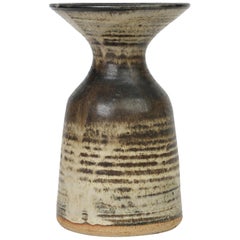Susan Bennett
Vintage 1970s English Modern Pottery
Stoneware
People Also Browsed
Vintage 1960s Turkish Baroque Turkish Rugs
Wool, Cotton, Organic Material
Antique 1890s Spanish Rustic Planters, Cachepots and Jardinières
Ceramic, Earthenware, Stoneware, Terracotta
Vintage 1970s American Daybeds
Leather
Vintage 1930s Chinese Table Lamps
Porcelain
Mid-20th Century Italian Mid-Century Modern Vases
Pottery
Mid-20th Century German Art Deco Decorative Bowls
Art Glass
Antique Early 19th Century English Porcelain
Porcelain
Antique 1890s English Art Nouveau Vases
Earthenware
20th Century English Modern Vases
Earthenware
Late 20th Century American Decorative Dishes and Vide-Poche
Ceramic
Vintage 1960s American Modern Vases
Ceramic
Antique Early 19th Century Spanish Folk Art Ceramics
Ceramic, Majolica
Late 20th Century English Modern Decorative Bowls
Stoneware
Antique 1880s Italian Arts and Crafts Table Lamps
Copper
Vintage 1910s Belgian Art Nouveau Scientific Instruments
Walnut
Late 20th Century English Modern Pottery
Stoneware
Susan Bennett For Sale on 1stDibs
How Much is a Susan Bennett?
A Close Look at Modern Furniture
The late 19th and early 20th centuries saw sweeping social change and major scientific advances — both of which contributed to a new aesthetic: modernism. Rejecting the rigidity of Victorian artistic conventions, modernists sought a new means of expression. References to the natural world and ornate classical embellishments gave way to the sleek simplicity of the Machine Age. Architect Philip Johnson characterized the hallmarks of modernism as “machine-like simplicity, smoothness or surface [and] avoidance of ornament.”
Early practitioners of modernist design include the De Stijl (“The Style”) group, founded in the Netherlands in 1917, and the Bauhaus School, founded two years later in Germany.
Followers of both groups produced sleek, spare designs — many of which became icons of daily life in the 20th century. The modernists rejected both natural and historical references and relied primarily on industrial materials such as metal, glass, plywood, and, later, plastics. While Bauhaus principals Marcel Breuer and Ludwig Mies van der Rohe created furniture from mass-produced, chrome-plated steel, American visionaries like Charles and Ray Eames worked in materials as novel as molded plywood and fiberglass. Today, Breuer’s Wassily chair, Mies van der Rohe’s Barcelona chair — crafted with his romantic partner, designer Lilly Reich — and the Eames lounge chair are emblems of progressive design and vintage originals are prized cornerstones of collections.
It’s difficult to overstate the influence that modernism continues to wield over designers and architects — and equally difficult to overstate how revolutionary it was when it first appeared a century ago. But because modernist furniture designs are so simple, they can blend in seamlessly with just about any type of décor. Don’t overlook them.
Finding the Right Folk-art for You
Folk art refers to a genre of art that shares the creator’s traditions, offering not just an artistic display but an opportunity to learn about a culture. Vintage, new and antique folk art typically reflects a heritage or location. It can include utilitarian objects and handmade art as diverse as weather vanes, portraiture and paintings, carnival art, quilts and duck decoys.
American folk art is frequently valued because of the traditional skills involved, like weaving, hand-carving wood and even stonework. Many folk artists are self-taught, while some train as apprentices within their community. By using available materials and taking a personal approach to their creations, artists ensure each piece is unique and conveys a story. Native American folk art includes functional objects reflecting their heritage, such as baskets, textiles and wooden pieces.
During the Great Depression, artistic materials in America were hard to come by, so artisans used discarded wood from cigar boxes and shipping crates to make highly stylized, notched pieces — most often picture frames and boxes — that are today sought after by collectors. This folk art style is called tramp art and was popular from roughly 1870 until the 1940s.
Folk art brings vibrant culture and traditions into your home. Browse an extensive collection of folk art on 1stDibs.
